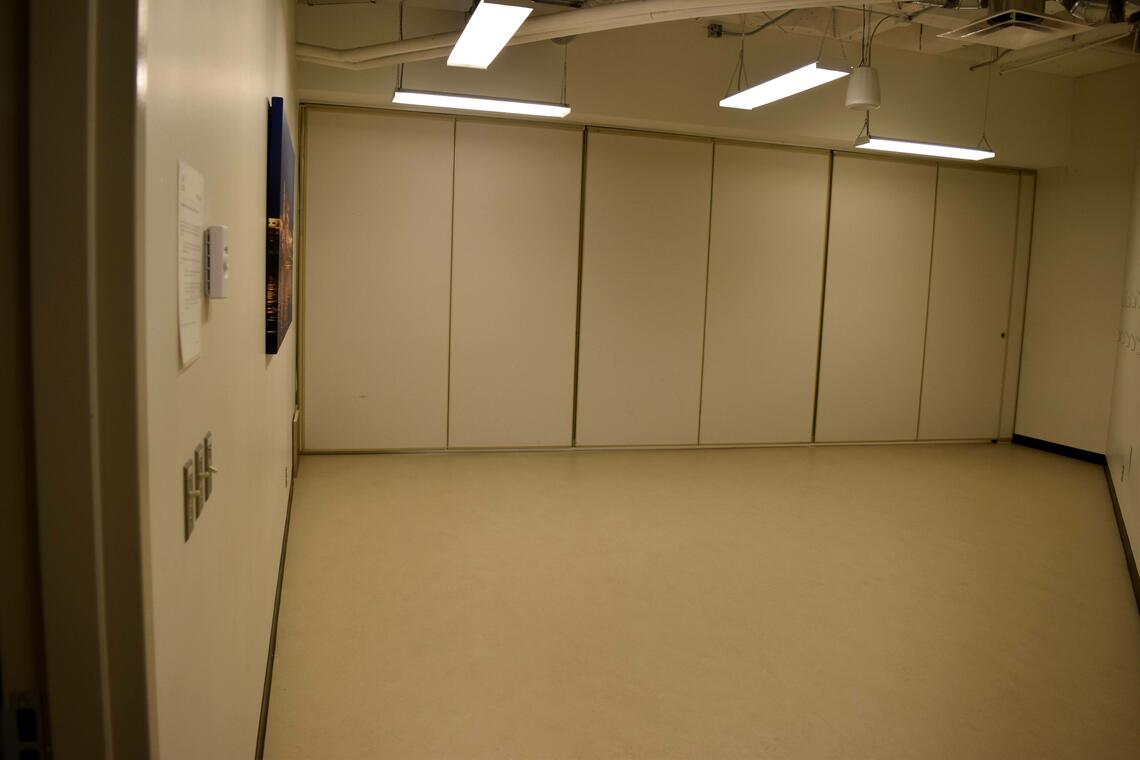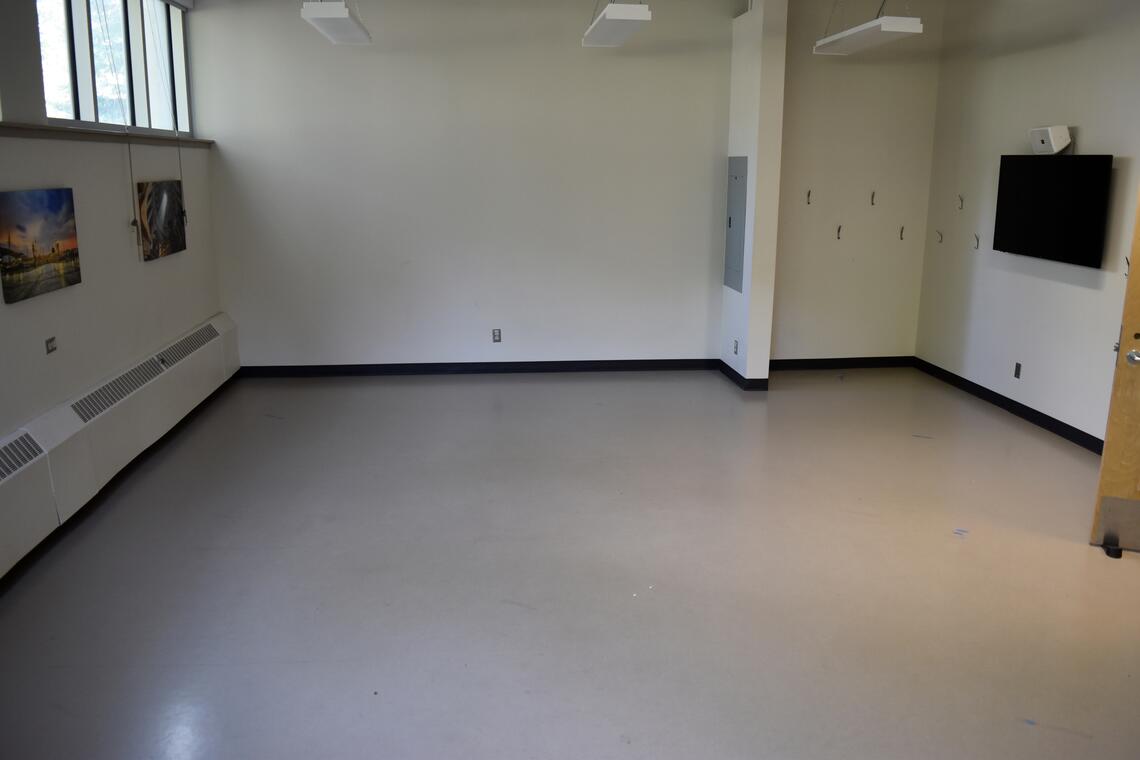Firmitas A - DC 12A
- Capacity:
- 34 with row-seating/standing room
- 22 with round tables
- Smudge, candle, and incense-friendly
- Tables, chairs, yoga mats, prayer mats available

Firmitas A - DC 12A
Firmitas B - DC 14

Firmitas B - DC 14
- Capacity:
- 159 with row-seating/standing room
- 106 with round tables
- Smudge, candle, and incense-friendly
- Tables, chairs, yoga mats, prayer mats available
Firmitas A and B Together
The divider between Firmitas A and B can be removed to create our biggest multi-faith room. Note: if you take down the divider, you are responsible for putting it back up again at the end of your booking.
- Capacity:
- 193 with row-seating/standing room
- 129 with round tables
Venustas - DC 12B
- Capacity:
- 45 with row-sitting/standing room
- 30 with round tables
- Tables, chairs, prayer and yoga mats available
- NOT smudge, candle, or incense-friendly

Venustas - DC 12B
Want to book a multi-faith room? Book now.
History of the Vitruvian Space
Vitruvian Man is perhaps Leonardo da Vinci's most famous illustration. In this work, da Vinci used both image and text to express the ideas and theories of Vitruvius, a first-century Roman architect and author. Vitruvius believed that an architect should focus on three central themes when preparing a design for a building: firmitas (strength), utilitas (functionality), and venustas (beauty). These Vitruvian ideas, presented by Leonardo, formed the basis of Renaissance proportion theories in art and architecture.
The purpose of the illustration is to bring together ideas about art, architecture, human anatomy, and symmetry in one distinct and commanding image. By combining text and illustration, da Vinci evokes a meaning which could not be created through words or image alone.
The Vitruvian Space – a coming together of strength (firmitas), functionality (utilitas) and beauty (venustas) – is a space where meaning is created beyond words and images alone.[1] It is used for spiritual health and wellness to acknowledge and support a pluralistic and inclusive campus.
Vitruvian Space opened on campus in January 2016 and boasts over 4,000 sq. ft. of space for the campus community and is located in the basement of the Dining Centre (DC 12), beneath The Landing.
[1] From: http://www.bl.uk/learning/cult/bodies/vitruvius/proportion.html and http://www.davincilife.com/vitruvianman.html
